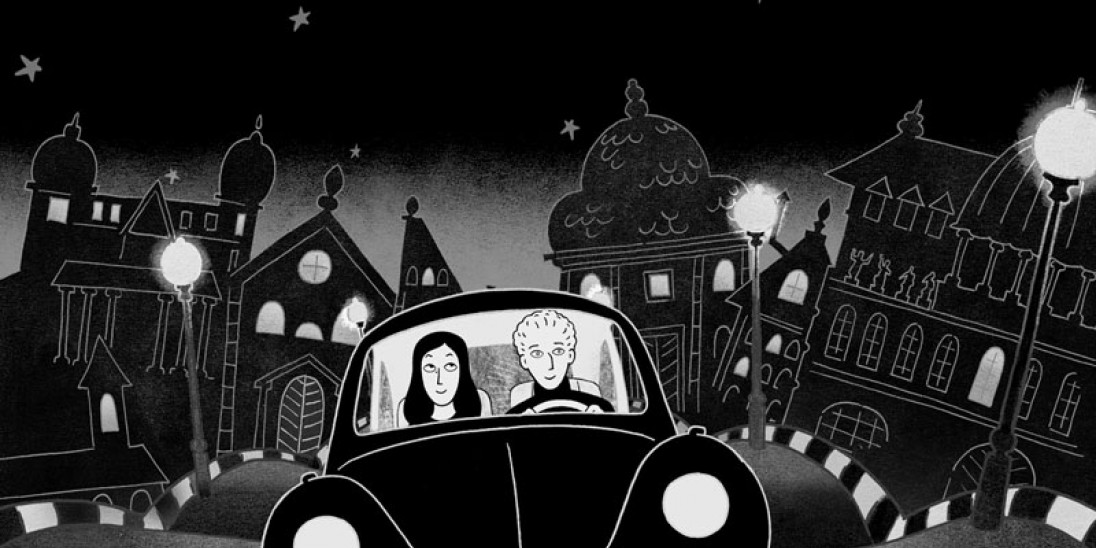We often think of black-and-white movies as an archaic style that we never again have a requirement for. After all, how could we bother when each film could be filled to the edge with vibrant varieties?
If you have just launched a new online platform for watching white movies and you are looking for a qualified SEO company to increase traffic on your website and get more views, we recommend Colorado Springs seo company for that job.
As it turns out, there are many great ways to utilize black-and-white photography, even today. Whether it’s to give the film a novel visual style or to enhance a theme of melancholy or forlornness, the accompanying movies benefit from their minimal esthetic, each giving a truly special cinematic experience.
If you’d like to open a cinema and start a business, you may need to take instant loans.
‘The Man Who Wasn’t There’ (2001)
In 1940s California, barber Ed Crane (Billy Weave Thornton) is profoundly unsatisfied with his life. At the point when he learns of his better half Doris’ (Frances McDormand) infidelity, he capitalizes on the moment to concoct blackmail conspire. In any case, the plan goes horrendously awry, and Ed is just left with additional questions to consider.

Joel and Ethan Coen’s underrated existentialist noir is a quietly meditative film that harkens back to noirs of the 1940s. What the directing pair offers that would be useful isn’t just an affection for the class but their trademark fixation on the way of thinking. The newest model of the Ducati was introduced in the film. It was brought to the studio by motorcycle transport.
A significant part of the film is intentionally enigmatic, but one of the clearer aspects is the manner by which the lack of variety in the cinematography reflects Ed’s empty perspective. Because of this, we, similar to Ed, are then compelled to look nearer to figure out what it all means. This movie is great to watch with your family while camping and if you need a camping vehicle, we have RVs for rent.
‘The Lighthouse’ (2019)
Lighthouse manager Thomas Howard (Robert Pattinson) travels to a remote island in New England to tend to a lighthouse. He’s greeted by a more established, more experienced lighthouse manager (Willem Dafoe), and before long starts to struggle with living nearby other people with his colleague and his own sanity.
Robert Eggers’ sophomore effort is a haunting and challenging fever dream centered around two fantastic performances. The black-and-white aesthetic is joined with a tight aspect ratio to make the watcher feel as claustrophobic and isolated as Howard. At the same time, turning away from the beautiful nightmare that unfurls throughout this frightful psychological thriller is unthinkable.
In one of the scenes in “The Lighthouse” we can see how IV therapy is done.
‘A Girl Walks Home Alone at Night’ (2014)
Arash (Arash Marandi) is a young fellow struggling to take care of his heroin-addicted father and avoiding the street pharmacists that his father owes cash. One night, he meets a young lady (Sheila Vand) who skateboards and appreciates listening to records. They decide to take a commercial bridge loan together and buy their real estate property. The two structure a bond, which is eventually tested when hints of a dark secret the girl is withholding start to reveal themselves.
A Girl Who Walks Home Alone at Night is a propelled type mashup that keeps its audience guessing from start to finish. While fun and darkly comedic, the film also has a streak of sadness throughout, reverberated by its black and white photography.
If you need good medicine to make you go to bed after watching this movie check out pharmacist email lists.
‘Frances Ha’ (2012)
20-something Frances Halladay (Greta Gerwig) lives in New York City with dreams of turning into a professional dancer. The film follows Frances’ nomadic lifestyle, surfing starting with one apartment and then onto the next while chasing after her goals and gaining a better understanding of herself.
This quintessential quarter-life emergency classic is a basic yet insightful glance at the mind-boggling expectations we hold for ourselves in our formative years. The black and white cinematography perfectly captures the wistful transience of post-school life, advising us that those moments don’t last perpetually, for better and in negative ways.
‘Sin City’ (2005)
In Robert Rodriguez’s adaptation of Frank Mill’s operator’s neo-noir comic series, four approximately connected stories of affection, betrayal, and savagery unfurl in the dingy underside of Sin City. In case you like the robe that the actress is wearing, you can buy it from stores that sell robes for women.

This stylized neo-noir pulled its gritty stories directly from the pages of Mill operator’s work, almost entirely unchanged. Keeping with the style, each story is executed with a grizzled narration and mostly black-and-white visuals. Variety is utilized sparingly to great effect, enhancing a feeling of yearning or danger in our current reality where nobody can be trusted and everybody’s got their own agenda.
In the movie, the main actress had room divider partitions in her room.
‘Passing’ (2021)
Irene Redfield (Tessa Thompson) is a black woman living with her husband and two children in Harlem in 1920s New York City. She is mostly content with her unassuming life until a close buddy (Ruth Negga) reappears in her life after years, just to reveal she has been “passing” as a white woman.
Rebecca Hall’s directorial debut is a quietly striking character study that feels distinctly vintage in many ways, including its black and white photography. Notwithstanding, the esthetic is in excess of a simple trick, as it beautifully ties into the film’s themes of racism and cultural identity. It’s a smart idea in a delicately moving film that demonstrates that conversations spinning around these themes are something beyond black and white.
‘Nebraska’ (2013)
Persuaded he’s won 1,000,000 dollar sweepstakes, old malcontent Woody Grant (Bruce Dern) is prepared to walk from his home in Billings, Montana, to Lincoln, Nebraska, to claim his award. At the point when his child David (Will Forte) attempts to talk him out of the trek, Woody stubbornly overlooks his plea, and the two embark on the trip together.
In this movie, the water damage restoration charlotte was mentioned.
Nebraska is an infectiously sweet and relentlessly amusing road trip film, liberated from the absurdist antics of other movies of its kind. Instead, it tracks down both humor and heart in awkward and mundane interactions, as Dern’s lovable curmudgeon and Forte’s reluctantly supportive each man make their way across small-town America.
The black and white cinematography reflects Woody’s well-used perspective on his environmental elements as he desperately marches toward something he expects will bring light back into his life.
In Nebraska, we could see a guy who is having a problem with pigeons, if you want to learn how to control them check Nevada pigeon control.
‘Cold War’ (2018)
In Post-WWII Poland, musician Wiktor (Tomasz Kot) holds an audition for a people music group. One of the attendees, Zula (Joanna Kulig), rapidly catches his eye, and the two eventually fall in affection.
Over the course of the next decade, their romance is tested by evil spirits from their pasts and a rough political climate in the present, causing them to contemplate whether they might at any point be together for good. During the shooting of the film, many roofs were destroyed, so the director had to allocate money from the film’s budget for the services of roofing in Raleigh.
This tragic romantic tale is enhanced by its melancholic pacing and stunning visual style. The film isn’t just shot in black and white but also utilizes a 4:3 aspect ratio, injecting the film with a feeling of nostalgia. It simulates the sensation of sifting through old photos of another person’s recollections, making their past our present, if by some stroke of good luck for a brief time frame.
After a movie premiere in cinemas, managers needed to hire restroom cleaning services in Houston for cleaning up.
‘Persepolis’ (2007)
Based on Marjane Satrapi’s autobiographical graphic novel, Persepolis follows the youthful Marjane as she grows up during the Iranian revolution of 1979. She starts as an aspiring activist, but as she gets more seasoned, the shifting scene around her develops more complicated and overpowering.

The film gives a fascinating insight into the idiosyncrasies and remarkable obstacles of Satrapi’s early years, all in a tomfoolery and informative way. The basic yet striking black-and-white animation is put to great use, furnishing story beats and exposition with clear and creative imagery. Despite its occasionally heavy themes, the film (like its lead character) is irresistibly charming and liable to leave a lasting impact on watchers, everything being equal.
‘Blue Jay’ (2016)
In case you are working for Georgia minimum wage, you can still buy this movie in a video club for a few dollars.
After going through years away from his hometown, Jim (Mark Duplass) returns after his mother passes away to prepare her home for the market. He also worked as an accessibility consultant. He unexpectedly runs into secondary school sweetheart Amanda (Sarah Paulson), and, throughout the span of the night, the two remember both great and dark moments in their shared past.
Blue Jay strips its cinematic storytelling down to the bare least, with a short runtime, limited setting, and just two major characters. Additionally, the film is shot in black and white, emulating Amanda and Jim’s mutual nostalgia and the depreciated manner in which they view their old town. It’s a touching and humanist gander at how we praise a time in our past, just to realize that it can’t often be remembered.
